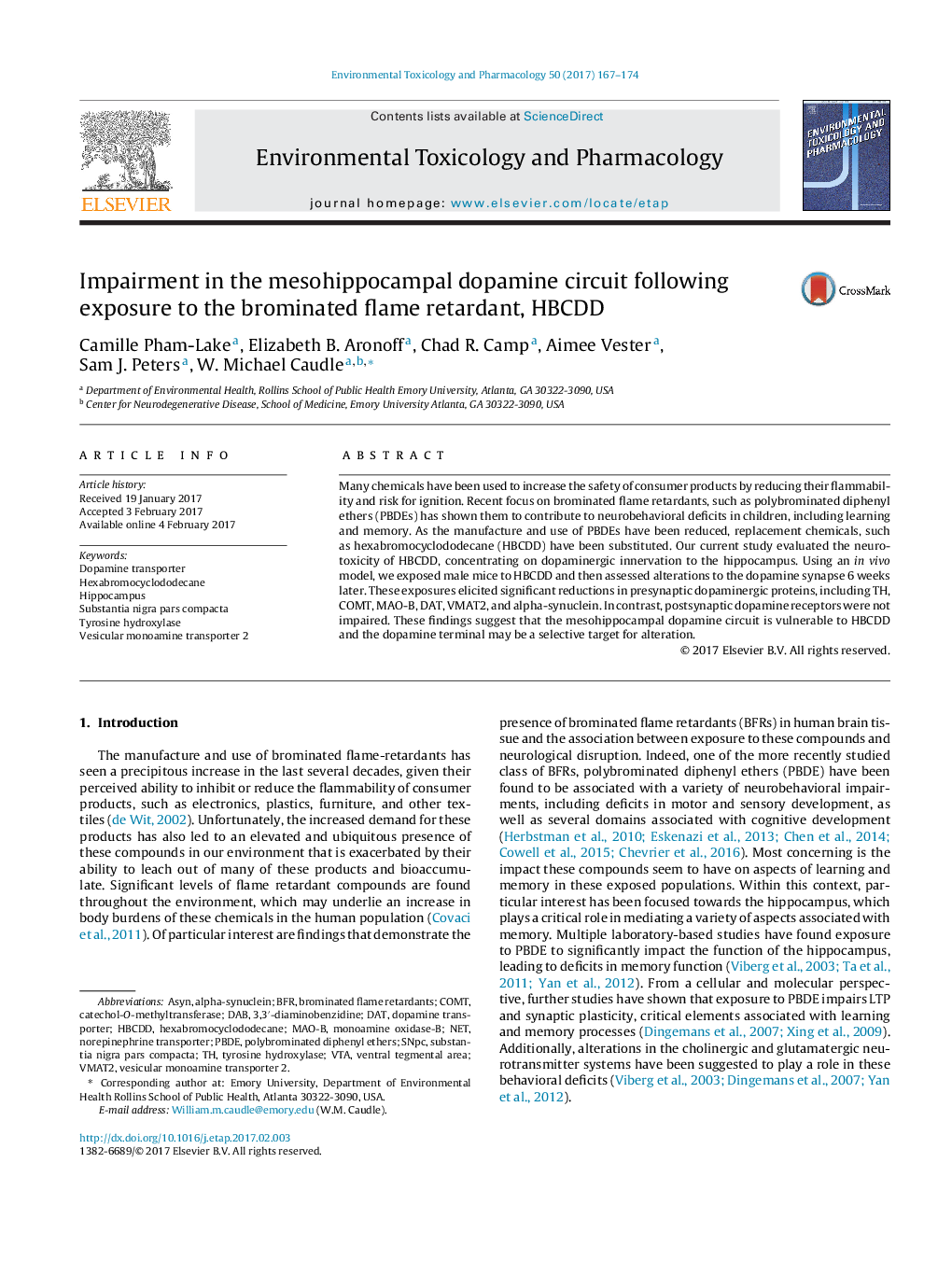| کد مقاله | کد نشریه | سال انتشار | مقاله انگلیسی | نسخه تمام متن |
|---|---|---|---|---|
| 5559718 | 1561694 | 2017 | 8 صفحه PDF | دانلود رایگان |

- Brominated flame retardants (BFR) are associated with neurobehavioral deficits.
- HBCDD exposure decreased presynaptic dopaminergic proteins in the hippocampus.
- Postsynaptic dopaminergic proteins in the hippocampus were not changed.
- This suggests the hippocampal dopamine circuit is vulnerable to HBCDD.
- Alterations to this circuit by HBCDD may underlie learning and memory deficits.
Many chemicals have been used to increase the safety of consumer products by reducing their flammability and risk for ignition. Recent focus on brominated flame retardants, such as polybrominated diphenyl ethers (PBDEs) has shown them to contribute to neurobehavioral deficits in children, including learning and memory. As the manufacture and use of PBDEs have been reduced, replacement chemicals, such as hexabromocyclododecane (HBCDD) have been substituted. Our current study evaluated the neurotoxicity of HBCDD, concentrating on dopaminergic innervation to the hippocampus. Using an in vivo model, we exposed male mice to HBCDD and then assessed alterations to the dopamine synapse 6 weeks later. These exposures elicited significant reductions in presynaptic dopaminergic proteins, including TH, COMT, MAO-B, DAT, VMAT2, and alpha-synuclein. In contrast, postsynaptic dopamine receptors were not impaired. These findings suggest that the mesohippocampal dopamine circuit is vulnerable to HBCDD and the dopamine terminal may be a selective target for alteration.
Journal: Environmental Toxicology and Pharmacology - Volume 50, March 2017, Pages 167-174